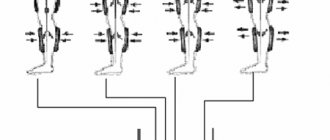Introduction
Blood pressure control is the main mechanism for correcting arterial hypertension (AH), one of the main and independent cardiovascular risk factors [1, 2].
In clinical practice, patients with hypertension with a high degree of cardiovascular risk predominate, in whom hypertension is often combined with concomitant diseases or comorbidity [3]. In conditions of high incidence of comorbidity, the choice of antihypertensive drugs becomes especially important. According to modern clinical guidelines, to control blood pressure or maintain it at the target level, the practitioner’s arsenal includes 5 classes of first-line antihypertensive drugs: ACE inhibitors (ACEIs), angiotensin II receptor blockers (ARBs), β-blockers (BBs), calcium channel blockers ( CCB) and diuretics (thiazide - hydrochlorothiazide, thiazide-like - chlorthalidone and indapamide) [1, 2]. Among them, a special place is occupied by BPC, whose positions will be discussed in this publication. One of the central issues in drug therapy for hypertension is the initial prescription of antihypertensive treatment, the choice of one drug or a combination. Modern international recommendations note that most patients with hypertension are recommended to use a combination of antihypertensive drugs, preferably fixed ones, as initial therapy, which significantly improves adherence to therapy [2]. It is further noted that preferred combinations should include a renin-aldosterone system (RAS) blocker (ACE inhibitor or ARB) and a dihydropyridine CCB or diuretic [4, 5]. CCBs of the dihydropyridine group are often included in the starting combination in the treatment of hypertension. New recommendations from the International Society of Hypertension (ISH) favor CCBs in combination with drugs that block the RAS as initial treatment for BP control [6].
According to the results of clinical studies (for example, a retrospective study by BM Egan et al., the results of which were published in 2012 [7]), confirmed by many years of clinical practice, a combination of antihypertensive drugs from any 2 classes increases the degree of reduction in blood pressure much more significantly than an increase doses of one drug; there is the possibility of physiological and pharmacological synergism (with suppression of counter-regulatory mechanisms for increasing blood pressure) between drugs of different classes, leading to a more pronounced decrease in blood pressure and better tolerability. All the described advantages of combination therapy are inherent only in rational combinations of antihypertensive drugs, which include the following: ACE inhibitor + diuretic, ARB + diuretic, ACE inhibitor + CCB, ARB + CCB, dihydropyridine CCB + BB, CCB + diuretic, BB + diuretic [1 , 2].
Experts in the treatment of hypertension give priority to fixed combinations, since they increase adherence to treatment and, as a result, the frequency of achieving the target blood pressure level. However, the frequency of prescribing fixed combinations is influenced by a number of circumstances [2]. For example, a feature of the domestic drug supply system is the absence of such drugs in the formularies of many medical institutions and in the lists of vital and essential drugs. Therefore, such drugs cannot be prescribed to patients in a hospital, as well as to preferential categories of patients. In such a situation, after a patient with good adherence to treatment has achieved the target blood pressure level, it does not make sense to transfer him from a free combination to a fixed one.
According to modern recommendations for the treatment of hypertension [2], in the presence of clinical feasibility, taking into account the characteristics of the clinical course of the disease, comorbid pathology, treatment tolerance and side effect profile, as well as in the presence of patient preferences associated with his personal positive or negative experience, and, accordingly, , taking into account the expected adherence to treatment, the doctor has the right to prescribe any antihypertensive drug that is registered for the treatment of hypertension in the Russian Federation, both in monotherapy and in combination, with an appropriate explanation in medical documents. It should be noted that the clinical guidelines indicate situations (low-risk patients with blood pressure <150/90 mmHg, patients ≥80 years old, patients with frailty syndrome) when treatment should begin with one drug, and may be prescribed one of the 5 classes of first-line drugs according to the patient profile and contraindications.
Features of action and advantages of BKK
The mechanism of action of CCBs has been well studied. It is known that calcium ions play an important role as secondary messengers in the regulation of the tone of vascular smooth muscle cells. After entering cells, they accumulate and are stored intracellularly (sarcoplasmic reticulum, mitochondria and other structures) with release when necessary. An increase in the intracellular content of free sodium ions is accompanied by vasoconstriction. Calcium antagonists, which inhibit the transmembrane entry of calcium ions through voltage-regulated channels, lead to a decrease in the likelihood of their opening. This is accompanied by a decrease in the flow of calcium ions into the cells, a decrease in muscle tone of resistive vessels and a subsequent decrease in blood pressure. Due to the peculiarities of the mechanism of action, a more correct name for calcium antagonists is calcium channel blockers.
The BCC class consists of 3 groups of drugs. The first group is phenylalkylamine derivatives, which include verapamil, the second group is benzodiazepine derivatives, which include diltiazem. Medicines of these groups are also called rhythm-slowing CCBs, since their use is accompanied by a decrease in heart rate (HR), an effect on the conduction system of the heart and the contractile function of the heart. Another group of CCBs is dihydropyridine derivatives, or the nifedipine group, whose representatives are mainly vasodilators. This group, in turn, consists of short-acting nifedipine, its various slow-release and extended-release modifications, felodipine, as well as amlodipine and lercanidipine - a more modern generation of initially long-acting CCBs.
Dihydropyridine CCBs are potent antihypertensive drugs that lower blood pressure regardless of age, gender, race, comorbidities, and other medications. Amlodipine, like other dihydropyridine CCBs, causes significant coronary and peripheral vasodilation. An increase in coronary blood flow underlies the antianginal (anti-ischemic) action of amlodipine. It also increases renal blood flow and glomerular filtration rate (GFR), reduces renovascular resistance without noticeable effects on plasma renin activity, aldosterone and catecholamine levels. The use of amlodipine in some cases may be accompanied by natriuresis due to renal vasodilation. Amlodipine does not have a cardiodepressive effect and does not affect heart rate.
During the use of verapamil and diltiazem, severe bradycardia, impaired atrioventricular conduction, heart failure, and, in the case of verapamil, constipation may occur. The most common undesirable effect of dihydropyridine CCBs is swelling of the ankles, the severity of which has a clear dose-dependence. Swelling is observed in 5% of those taking amlodipine at a dose of 5 mg, its frequency increases to 25% in those taking 10 mg. Diuretic therapy does not affect this adverse effect of CCBs. Edema is mainly associated with arteriolar dilatation, which leads to an increase in intracapillary pressure (capillary hypertension) and is accompanied by the release of fluid into the interstitial space. It should be noted that drugs that cause venous dilatation will reduce capillary hypertension and the development of edema. The simultaneous administration of ACE inhibitors or ARBs, which have a venodilating effect, significantly reduces the likelihood of edema as an undesirable effect of dihydropyridine CCBs.
conclusions
Calcium channel blockers and drugs from this group are indicated in many clinical situations, which meets the interests of patients in the treatment of cardiac diseases.
Proper treatment has a significant impact on the quality of life and prevents the risks of life-threatening conditions.
Every patient with cardiac pathologies should know what these calcium channel blockers are and why heart failure directly depends on the interaction of protein fractions with cellular channels.
The role of calcium channel blockers in the treatment of hypertension
CCBs are often used to treat hypertension and are as effective in lowering blood pressure and preventing major cardiovascular events and death as other classes of antihypertensive drugs, referred to as first-line or first-line therapy [8, 9]. In several controlled studies, CCBs have demonstrated greater efficacy than BBs in slowing the progression of carotid atherosclerosis and reducing left ventricular hypertrophy (LVH), as well as a greater effect in reducing the risk of cerebral events [10]. Table 1 shows the groups of drugs preferred in various clinical situations [10]. It can be seen that CCBs are recommended for patients with hypertension and LVH, asymptomatic atherosclerosis of peripheral arteries, a history of stroke, angina pectoris, atrial fibrillation (for heart rate control), metabolic syndrome, and elderly patients, especially with isolated systolic hypertension. Thus, in such situations, subject to new clinical recommendations in prescribing monotherapy (patients at low risk and blood pressure <150/90 mm Hg, patients ≥80 years old, patients with frailty syndrome), first-line drugs should be given preference CCBs, as in other cases, include them in a combination of antihypertensive drugs. As noted earlier, CCBs are a heterogeneous class of drugs. Most controlled clinical trials in which CCBs have been shown to be effective on prognosis have received dihydropyridine derivatives, mainly amlodipine [1], while verapamil and diltiazem, rhythm-slowing CCBs, or non-dihydropyridine derivatives have been studied in fewer studies [9].
Amlodipine as the main representative of dihydropyridine calcium channel blockers
Amlodipine is distinguished by its high antihypertensive effectiveness and duration of action (half-life - 30–35 hours), which allows it to be prescribed once a day in most cases. These features of the drug's action explain its effects in achieving blood pressure control, organ protection and reducing the risk of cardiovascular events, which have been demonstrated in many clinical studies.
The original amlodipine has been very well studied in more than 800 clinical studies involving more than 600,000 patients. From the point of view of reducing the risk of developing cardiovascular complications and improving the prognosis for hypertension (the main goal of treating this disease), amlodipine has demonstrated great protective potential in clinical randomized comparative studies such as ALLHAT, ASCOT, VALUE, ACCOMPLISH [11–14].
According to the ALLHAT study, initiating treatment for hypertension with a diuretic (chlorthalidone), or an ACE inhibitor (lisinopril), or a CCB (the original amlodipine) did not differ in its effect on the risk of developing events of the primary endpoint, represented by the combination of death from coronary heart disease (CHD) and non-fatal myocardial infarction (MI), however, those receiving amlodipine therapy had a significantly lower risk of developing cerebral accidents [11].
In another large-scale international clinical trial, ASCOT, which included 19,257 patients with hypertension and a high risk of complications, but without clinical manifestations of coronary artery disease, therapy based on the original amlodipine, compared with therapy based on atenolol, showed an advantage in reducing the risk development of cardiovascular events and death from cardiovascular causes [12]. The superiority of amlodipine was associated with better control of aortic BP (central BP), a better metabolic profile (carbohydrate and lipid metabolism) and reduced BP variability [12].
The international clinical trial VALUE studied the effect of the ARB valsartan compared with the CCB amlodipine on the course of the disease in 15,245 patients with hypertension, in most cases with a history of acute cerebrovascular accident (ACVA), coronary artery disease, and diabetes mellitus (DM) [13]. Compared with the valsartan group, among patients taking amlodipine, there were 19% fewer cases of myocardial infarction, and there was a tendency to reduce the risk of stroke by 15% (p = 0.08) with the same mortality from all causes and the frequency of hospitalizations due to heart failure [ 13]. As shown by the analysis of the data from this study, those receiving amlodipine in the first months had much better control over blood pressure (a decrease in blood pressure by 3/2 mm Hg more in the amlodipine group), associated with the rapidity of action of amlodipine, with a significant difference in the reduction in heart rate -vascular complications at the start of the study in favor of amlodipine.
The ACCOMPLISH clinical trial compared the effect of two initial combination therapy regimens on the incidence of cardiovascular complications in 10,700 patients with high-risk hypertension (mean age 68 years, 60% of patients had diabetes, 46% had coronary artery disease, 13% had stroke in history, the average body mass index was 31 kg/m2) - the ACE inhibitor benazepril with amlodipine or the thiazide diuretic hydrochlorothiazide [14]. It was shown that the transfer of patients to a fixed combination of drugs was accompanied by a significant improvement in blood pressure control, and after 3 years the study was completed ahead of schedule due to evidence of higher effectiveness of the combination of amlodipine with an ACE inhibitor - a significant reduction by 20% in the risk of developing events of the primary end point according to compared with the group receiving a combination of an ACE inhibitor with hydrochlorothiazide (Fig. 1). The results of this study indicate that the combination of amlodipine with ACE inhibitors has good prospects for widespread use in clinical practice, especially in the treatment of patients with hypertension in combination with coronary artery disease.
Figure 2 shows the benefits of the combination of an ACE inhibitor and amlodipine in reducing the rate of progression of chronic kidney disease (CKD) compared with the combination of an ACE inhibitor and a diuretic in patients with hypertension [15]. It should also be noted that when using a combination of amlodipine and ACE inhibitors, not only improved blood pressure control is achieved, but also a reduction in the incidence of side effects, in particular swelling of the legs, characteristic of dihydropyridine calcium antagonists.
In clinical studies PREVENT and CAMELOT, the vasoprotective and antiatherosclerotic effects of amlodipine were proven [16, 17]. The 3-year randomized, placebo-controlled PREVENT study examined the effect of long-term use of the original amlodipine on clinical outcomes and atherosclerotic lesions of the carotid and coronary arteries (according to coronary angiography and ultrasound of the carotid arteries) in 825 patients with coronary artery disease [16]. During the study, in the group of patients taking amlodipine, there was no significant effect on the progression of the atherosclerotic process in the coronary arteries according to coronary angiography. At the same time, while taking amlodipine, there was a significant slowdown in the progression of the thickness of the walls of the carotid arteries and a reduction in the incidence of unstable angina by 33% and the need for myocardial revascularization by 43%.
The CAMELOT trial compared the ACE inhibitor enalapril with the original CCB amlodipine and placebo in reducing the risk of cardiac events in 1991 patients with angiographically proven CAD and baseline normal blood pressure (129/78 mm Hg). During 2 years of follow-up, the incidence of events of the primary end point (a combination of major cardiovascular events) significantly decreased during amlodipine therapy, mainly due to a decrease in the frequency of hospitalizations due to progression of angina (RR 0.69, 95% CI 0.54–0.088 ; p<0.003) [17]. In one of the substudies (NORMALISE) within the framework of the CAMELOT program, in which the dynamics of coronary atherosclerosis was assessed using intravascular ultrasound, an increase in the volume of atherosclerotic plaque was recorded in the placebo group, an increasing trend in the enalapril group, and a decreasing trend in the rate of progression in the amlodipine group atherosclerotic plaques, and when the initial blood pressure exceeded the group average, the differences were significant [17].
Thus, the anti-ischemic and anti-atherosclerotic properties of amlodipine make it possible to recommend it for the treatment of patients with hypertension and concomitant ischemic heart disease.
Safety of amlodipine
It should be emphasized that there are no absolute contraindications for the use of amlodipine. CCBs, especially amlodipine, are one of the most well-studied and safe cardiovascular drugs. An equally important aspect is the metabolic neutrality of amlodipine. Data obtained in recent years on the high incidence of metabolic syndrome and its role in the development of atherosclerosis and cardiovascular complications give this feature of the action of amlodipine special significance. It has been shown that with its long-term use in patients with hypertension [11, 12] and stable angina [16], the number of new cases of diabetes is significantly less than in groups of patients receiving diuretics, BB or placebo. According to a meta-analysis [18], the incidence of new cases of type 2 diabetes may be reduced by prescribing ARBs/ACE inhibitors or CCBs compared with beta-blockers and diuretics (Fig. 3). In the ALLHAT study of 33,357 patients with hypertension, the incidence of new diabetes over 4 years was 8.1% in the ACE inhibitor lisinopril group, 9.8% in the CCB amlodipine group, and 11.6% in the thiazide diuretic chlorthalidone group [11]. ]. CCBs also do not have an adverse effect on lipid metabolism in comparison with BBs and diuretics [12].
The role of amlodipine in blood pressure control in elderly patients (≥65 years)
It has been established that the prevalence of hypertension increases with age, reaching about 60% in people >60 years of age, and about 75% after 75 years of age [1]. Evidence from clinical trials suggests that antihypertensive therapy also reduces the risk of cardiovascular events and mortality in older adults [19–22] and is generally well tolerated. However, older patients are more likely to have comorbid conditions and diseases, including renal dysfunction, peripheral vascular atherosclerosis, chronic obstructive pulmonary disease (COPD), and postural hypotension, which may be worsened by certain antihypertensive drugs. Elderly patients are also often taking other medications that may interact negatively with antihypertensive agents.
As previously noted, treatment of very elderly patients should begin with monotherapy [1, 2, 22]. If combination therapy is indicated, it should always be started with minimal doses of drugs. The clinician should be aware that loop diuretics and α-blockers should not be prescribed to such patients (unless otherwise required), since their use is associated with sudden falls and injuries [23, 24]. It is also necessary to frequently evaluate renal function to exclude an increase in creatinine levels and a decrease in GFR due to impaired renal perfusion as a result of decreased blood pressure. During therapy, systolic blood pressure should be reduced to 130–139 mmHg. Art., and DBP - up to <80 mm Hg. Art. with good tolerance. CCBs, in particular amlodipine, are recommended for older people with hypertension.
Contraindications and side effects
Most calcium antagonists are prohibited to take during the acute period of myocardial infarction; if these contraindications are neglected, the risk of cardiac death greatly increases. Also among the prohibitions on therapy are:
- pre-infarction condition, unstable angina;
- arterial hypotension;
- tachycardia - for a group of drugs with nifedipine;
- bradycardia - for a group of drugs with verapamil;
- acute heart failure;
- age up to 12-18 years, depending on the drug group and the specific drug;
- lactation, pregnancy;
- the last stages of renal and liver failure (the ban is not relevant for all medications).
Each remedy has side effects, most often they include headache, fever, and severe drop in blood pressure. A number of patients experience peripheral edema and the development of tachycardia. Many medications, when taken for a long time, cause constipation, increased liver function tests, and skin rashes. Cinnarizine may increase the symptoms of Parkinson's disease.
The role of CCBs in blood pressure control in comorbid patients
According to current recommendations, the prescription of loop and thiazide diuretics to patients with COPD or bronchial asthma (BA) requires caution due to the high likelihood of hypokalemia when used together with β2-agonists and especially with steroid therapy [2]. When using BBs, especially non-selective ones, bronchospasm may occur, and therefore they should not be routinely prescribed to patients with COPD, nor should they be prescribed to patients with asthma. However, there is research data on the use of small doses of highly selective BBs in patients with COPD in various clinical situations, including patients with hypertension, without worsening bronchial obstruction or even with some improvement [25].
At the same time, the use of CCBs is safe and even helps to reduce bronchial hyperreactivity and increase the bronchodilatory effect of β2-agonists, which makes it possible to recommend CCBs together (if combination therapy is necessary) with RAS blockers as initial antihypertensive therapy, and in case of failure to achieve target blood pressure or the presence of concomitant diseases with appropriate indications, the addition/prescription of thiazide or thiazide-like diuretics and highly selective BBs can be considered [1, 2].
Diagnosis of kidney damage due to hypertension is based on the detection of decreased renal function and/or detection of albuminuria. CKD is classified according to the estimated GFR calculated using the CKD-Epidemiology Collaboration 2009 formula [26]. Hypertension is the most important risk factor for the development and progression of CKD, regardless of its etiology. In accordance with international guidelines on hypertension [1, 2], blood pressure in patients with CKD should be reduced to <140/90 mmHg. Art. and further up to values of 130/80 mm Hg. Art. According to a recently published meta-analysis, lowering blood pressure significantly reduced the incidence of end-stage renal disease in patients with CKD, but only in the presence of almubinuria, and had no effect on cardiovascular events [27]. However, a larger meta-analysis demonstrated a reduction in overall mortality with lowering blood pressure in patients with CKD [28]. Achieving recommended blood pressure targets in CKD usually requires combination therapy, which should begin with a combination of a RAS inhibitor with a CCB or diuretic. The combination of two RAS blockers is not recommended [29]. If GFR is <30 ml/min/1.73 m2, the thiazide diuretic should be replaced with a loop diuretic.
Elevated blood pressure is a well-established risk factor for the development of chronic heart failure (CHF), which in turn significantly worsens the prognosis. Along with lifestyle modification, patients with hypertension and CHF are recommended to be prescribed ACE inhibitors or ARBs, beta-blockers and diuretics. To more effectively control the symptoms of heart failure, switching from thiazide diuretics to loop diuretics is recommended. Drugs of the verapamil group are contraindicated for use in patients with CHF, and amlodipine can be prescribed to improve blood pressure control, since it does not negatively affect the course of heart failure.
Ischemic or hemorrhagic stroke is one of the most common complications of untreated or uncontrolled hypertension. Adequate blood pressure control is manifested in a reduction in the risk of developing primarily hemorrhagic stroke, the frequency of which is much lower in countries with effective treatment of hypertension. To achieve the target blood pressure level (in all patients <140/90 mm Hg, with a decrease of <130/80 mm Hg in patients under 65 years of age, but not less than 120/70 mm Hg), medications are recommended RAS blocking agents (ACE inhibitors or ARBs) with diuretics or CCBs. Prescribing amlodipine to these patients due to the absence of absolute contraindications, long duration of action and generally good tolerability of the drug (swelling of the ankles occurs, which can be corrected with dose reduction) can be considered both in monotherapy and in combination.
Patients with rheumatic diseases due to the high prevalence of hypertension in inflammatory rheumatic diseases (rheumatoid arthritis, psoriasis, etc.) and increased cardiovascular risk require increased attention. However, not all clinical recommendations single out this population of patients with hypertension [2, 3]. The new 2021 ISH hypertension guidelines note that ACE inhibitors or ARBs (RAS overactivity) in combination with a CCB should be preferred for BP control [6]. It is necessary to avoid the use of high doses of non-steroidal anti-inflammatory drugs for a long time, which can lead to an increase in blood pressure.
The prevalence of hypertension increases in patients with mental disorders, in particular depression. Psychosocial stress, which is accompanied by increased blood pressure, and mental disorders increase cardiovascular risk. Depression is also associated with higher cardiovascular morbidity and mortality, highlighting the importance of BP control. In patients with hypertension and mental illness, blood pressure should be reduced in the same way as in the general population, preferably with RAS inhibitors and diuretics with a lower incidence of pharmacological interactions with antidepressants. At the same time, CCBs and α-blockers should be used with caution in patients with orthostatic hypotension, which can occur, for example, while taking serotonin reuptake inhibitors; β-blockers (not metoprolol) should be used in the presence of tachycardia associated with taking antidepressants and other antipsychotic drugs.
How to take it correctly
The order of administration, dosage, and duration of therapy are determined by the attending physician after examination, establishing the exact picture of the disease according to indications.
General recommendations for taking calcium blockers:
| Name | Recommended dose | Frequency of reception |
| Amlodipine | 2.5 mg gradually increased to 10 mg | 1 time per day |
| Isradipin | 2.5 mg gradually increased to 10 mg | 1 time per day |
| Felodipin | 2.5 mg gradually increased to 10 mg | 2 times a day |
| Nifedipine | 5-10 mg | 4 times a day |
| Verapamil | 40-120 mg | 1 per day |
| Gallopamil | 50 mg | 4 times a day |
Doctors recommend increasing the dosage gradually. Increasing the dosage is permissible up to the maximum values specified in the instructions. When a therapeutic effect is achieved, there is no need to increase the dose. Medicines are prescribed by the attending physician according to indications after examination.
Any medications for hypertension can only be taken as prescribed by a doctor.
Time to take antihypertensive drugs
The optimal treatment regimen for patients with hypertension is a single dose of antihypertensive drugs with a priority of combination therapy, which ensures blood pressure control for 24 hours, including by increasing treatment adherence. However, the question remains about the best time to take drugs - in the morning or at night. A multicenter, prospective, open-label study in 40 Spanish centers including 19,168 patients with hypertension and various comorbidities (obesity in 30%, diabetes in 24%, CKD in 29%, history of cardiovascular events in 10% of patients) showed the benefits of evening antihypertensive therapy. [thirty]. According to the protocol, patients took 1 or more antihypertensive medications either before going to bed or shortly after waking up. On average, 53% of patients received ARBs, ACE inhibitors - 24%, CCBs - 43%, diuretics - 43%, BBs - 20%. Noteworthy is the high frequency of use of CCBs, which were significantly more often prescribed. The most frequently prescribed monotherapy in both treatment regimens were ARBs or ACE inhibitors and CCBs (mainly amlodipine, 13% of patients). Participants took an average of 1.8 antihypertensive medications per patient [30].
During follow-up (median 6.3 years), patients taking medications at bedtime had a significantly lower rate of primary endpoint events (cardiovascular death, MI, coronary revascularization, heart failure, or stroke) compared with those taking in the morning. by 45% [0.55 (95% CI 0.50–0.61), p<0.001] and each of its individual components (p<0.001 in all cases), i.e. the probability of cardiovascular death decreased by 56% [0.44 (0.34-0.56)], MI - by 34% [0.66 (0.52-0.84)], coronary revascularization - by 40% [0.60 (0. 47–0.75)], heart failure – by 42% [0.58 (0.49–0.70)], stroke – by 49% [0.51 (0.41–0.63)] (Fig. . 4). This group showed improved renal function and a more favorable lipid profile. Thus, in a large-scale comparative study of real-life clinical practice, it was shown that the administration of antihypertensive drugs before bedtime is safe and reduces the risk of cardiovascular complications to a greater extent compared with morning administration [30].




